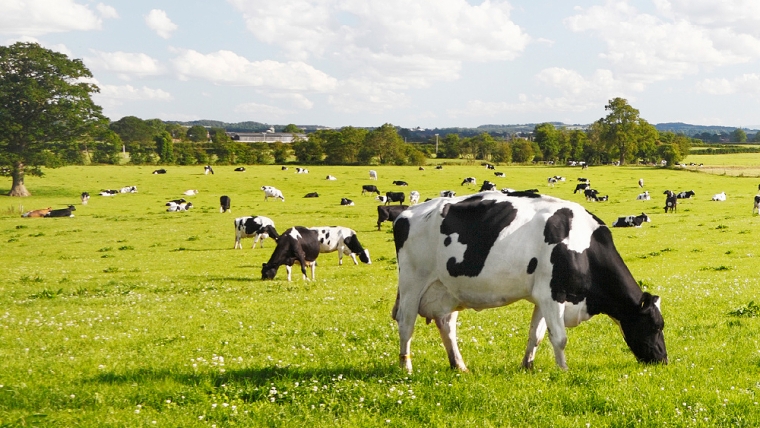
New Zealand has a problem with externalities, actually it’s almost the whole globe, but it is here where our concerns and responsibilities lie. It ranges from tourism (our biggest export earner pre-covid-19, remember?) to dairying, to energy production right through to the driving habits of the population.
However, by far and away the greatest scrutiny seems to be on the dairy industry.
The latest focus on the impact on New Zealand fresh water resources came in a publication by Radio New Zealand.(RNZ). What motivated RNZ to go down this route when so many have gone down before was unclear. The only reason shown as motivation was a report from 2017 from the OECD which was highlighted. The industry certainly has created problems. I don’t think anyone in authority has denied that. And, while the dairy industry responds to the criticisms it must be getting sick of having to and the public are probably now only hearing white noise emanating from both sides of the argument. (Which I’m about to add too).
One thing the dairy industry seems not to be doing is putting out a comprehensive compilation of the gains that are now being made alongside of the issues that exist. It is this inclusion of progress made that was lacking (in my view) in the RNZ article which made it appear to be lacking balance.
Cow numbers are reducing and while still greater than what they were 30 years ago and considerably so, they are reducing and by a quite a margin.
An approximate reduction of 600,000 cows in the last 6 years is not to be sneezed at. Taking a snapshot look at the Bay of Plenty and Northland, two areas where horticulture is on the rise. From the 2017/18 year to the 2019/20 year in both cases cow numbers have decreased by -5%, about 20% more than the national average. If the drop is being driven by land use change, which I suspect, we will see more regions shift from dairying to horticulture or other more intensive land uses.
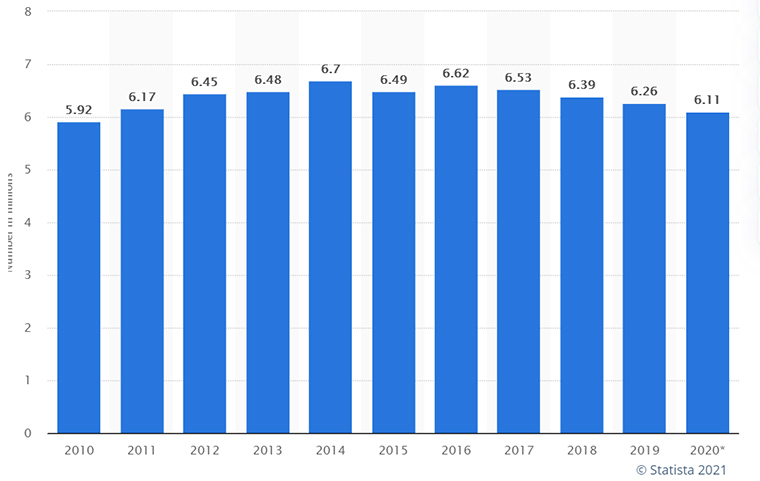
Since 2013 with DairyNZ's Sustainable Dairying: Water Accord approximately 25,000 kilometres of waterways have been fenced off. The amount fenced off was over 98% in 2018 so must be approaching 100% of waterways over 1m in width by now.
Since 2020 there must be at least 3metres either side of the waterways included in the riparian area, not an inconsiderable amount of land and expense both in fencing and riparian planting. Obviously, this is only one source of dairy land runoff with leaching of nitrogen through the soil being a major issue still. As of July 1st, 2021, farmers are restricted in the amount of nitrogen fertiliser that can be applied to the land to 190kgsN per year. For Canterbury who have average around 230kgs in the past this is a 17% reduction.
Is it enough? perhaps not but progress is being made and many farmers were applying up to and over 300kgs annually. The total amount of nitrate-nitrogen leached from livestock has increased from 189,000 tonnes nationwide in 1990 to 199,000 tonnes in 2017. This is a +5% increase. Within New Zealand some areas, Canterbury in particular the issue is greater than in some other parts. However, these areas are also applying higher levels of restrictions on farmers to restrict leaching. In some areas they must reduce their nitrogen loss by -15% by 2025, -25% by 2030 and -36% by 2035. In others they must reduce their nitrogen loss by -30% by 2022. It is worth mentioning that nowhere near “100 percent of the cows' urine and feces (sic), as well as the excess chemicals from fertiliser for their feed leaching into waterways.” as quoted from the RNZ article end up in the waterways. Through a mix of different plant species, better targeting of irrigation, grazing off techniques and reduced cow numbers farmers now are able to enable cow urine to be better utilised by plants and added to nitrogen cycle. Post intensive winter grazing farmers are required to replant as soon as practicable (October 1st) to help capture surplus nutrients and prevent undue runoff. Too much nitrogen still leaches through the system but with intensive areas limited to 50 ha or 10% of the farm (which ever is the greater) the impact will be reduced.
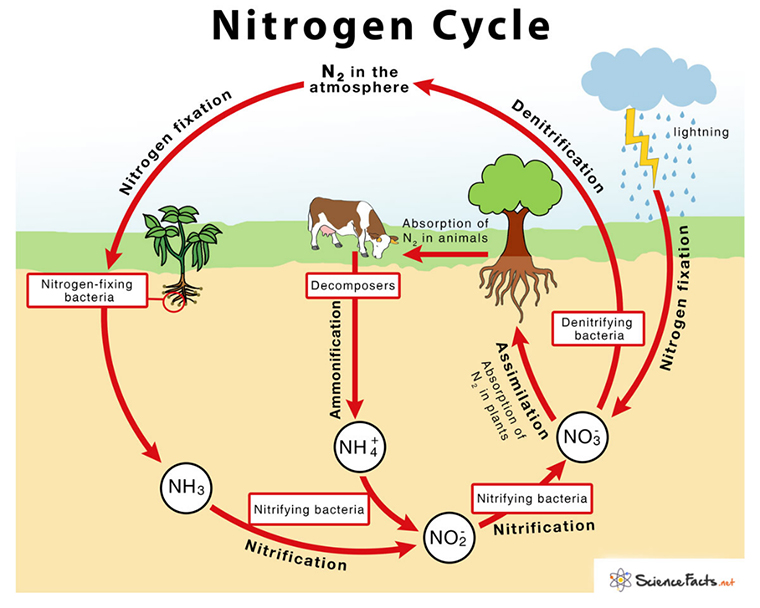
As can be seen from the map below from ECans annual water quality survey when the focus is on nitrogen content the number of wells which have decreasing water quality are too many. Taking the trends from the report showed:
“From the 2011 to 2020 annual surveys we found:
- 251 of the 322 wells sampled in 2020 had enough data to analyse trends (at least 8 samples each from the last ten years)
- 78 wells (31%) showed ‘very likely increasing’ trends in nitrate-nitrogen concentrations
- 40 wells (16%) showed ‘likely increasing’ trends in nitrate-nitrogen concentrations
- 37 wells (15%) showed ‘likely decreasing’ trends in nitrate-nitrogen concentrations
- 26 wells (10%) showed ‘very likely decreasing’ nitrate-nitrogen concentration trends
- 70 wells (28%) had no decreasing or increasing trend in nitrate-nitrogen concentrations.”
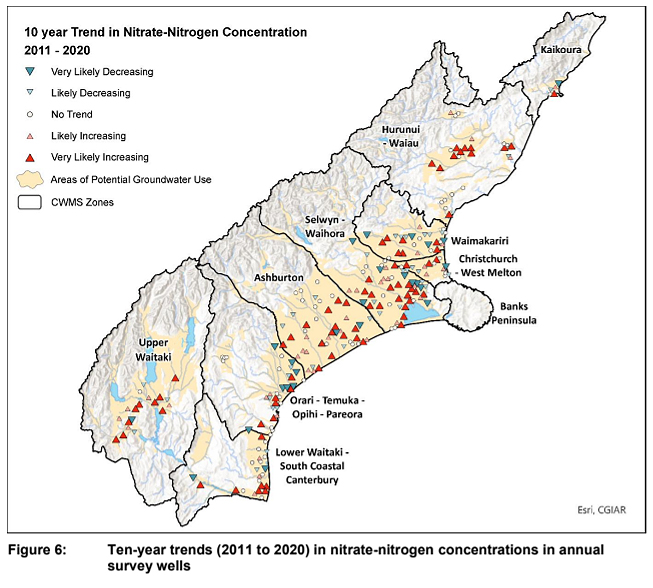
Source: ECan
To summarise, 47% has decreasing quality, while 25% were improving. The balance (28%) showed no trend. The 47% is concerning but not surprising when it is considered that it may take up to 30 years (in Canterbury soils) for the N to arrive in the aquifers. That 25% are showing improvement is promising. As can be seen below the deeper the wells go the better the water quality trends with
- Shallow wells 32%
- 20-40 metres 25%
- 40- 80 metres 55%
- 80metres +45%
having less than 1mg/L
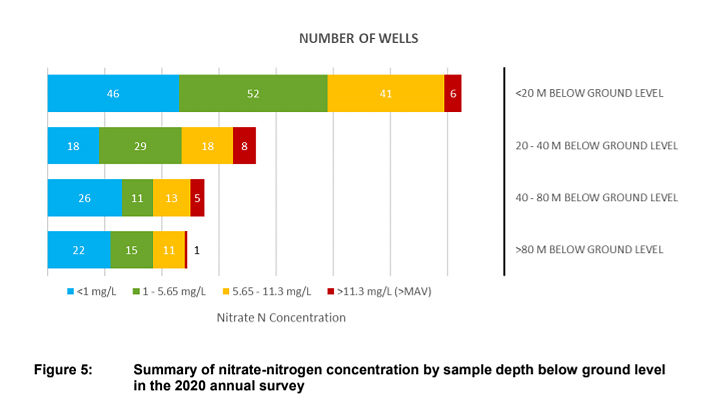
Like what you read? Support our journalists. Find out how.
What this all means at the national level is shown below. A similar picture to what is taking place in Canterbury wells. Some good, some not, and plenty of room for improvement.
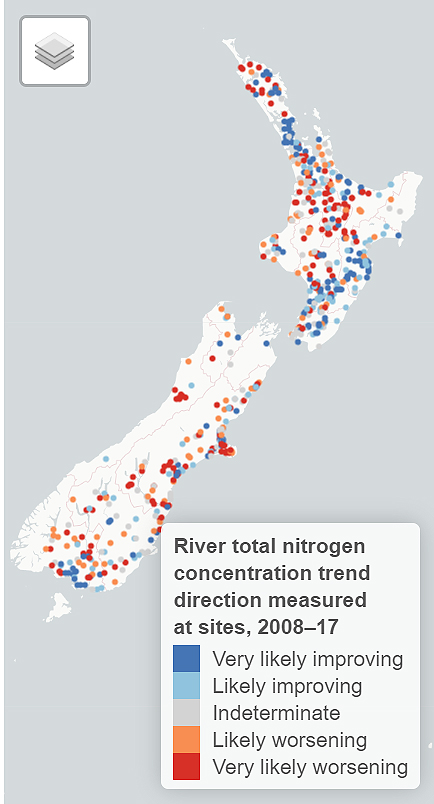
Source: Stats NZ
Twenty or more years ago scenes like below were common place with effluent coming from dairy farms and piggeries alike.
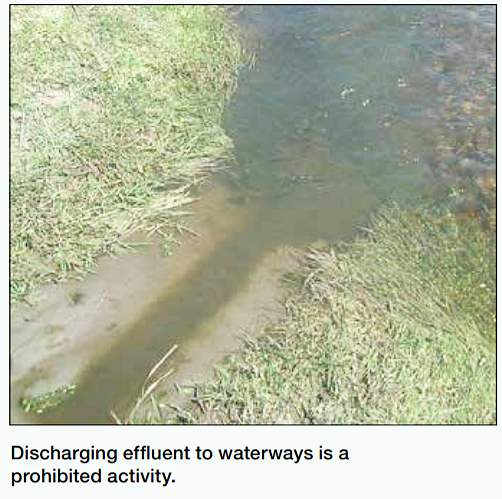
Source ORC
Farm effluent disposal is now highly regulated and seen as a resource rather than something to be ‘poured down the drain’.
Fish and Game New Zealand are a regular critic of New Zealand dairy and obviously have an interest in keeping our waterways in clean condition. On their web site regarding dairy farming they highlight: Section 17 of the Resource Management Act 1991 states that: 'Every person has a duty to avoid, remedy or mitigate any adverse effect on the environment arising from an activity carried on by or on behalf of that person’ . This is (was) at the core of the RMA. However F&GNZ, I have always felt, are in the ‘pot calling kettle black’ category. I have heard trout being called the “rats of the waterways”. A bit harsh perhaps but does allude to the externalities that they have with impacts on our native fisheries.
To summarise, dairy farming has created problems, as has almost all forms of farming but they are facing up to them. Some might say too little too late but compared to some areas of change the industry is operating at speed. The general public’s (including farmers et al) love affair with cars etc is a case in point. Car numbers continue to increase, and it could be argued that threats from climate are far greater than rapid conversion of water ways to higher quality.
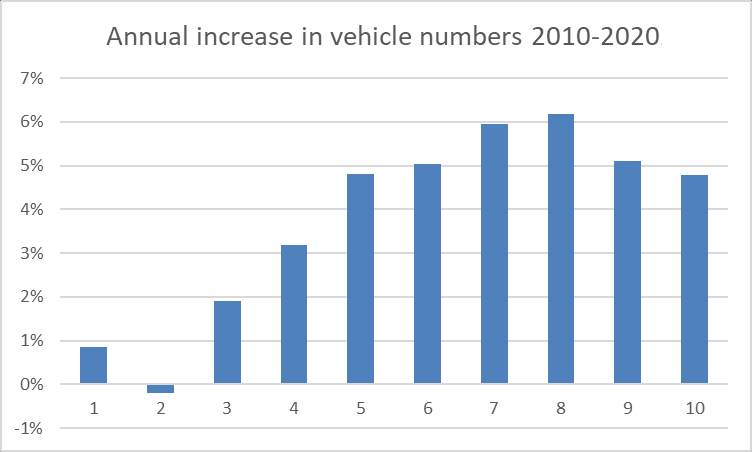
P2 Steer
Select chart tabs
15 Comments
The author’s comment about FGNZ and trout is somewhat misguided. Any business needs to work within boundaries, environmental, legal, health and safety etc. And anyway, trout will tolerate water that is probably not safe for swimming. Hawkes Bay’s TukiTuki River is an example. And that last paragraph beggars belief. Car numbers have grown largely in line with population growth, and transport emissions are still significantly below agricultural ones, which I believe are still rising. Let’s not go down that road…
My take is that Mr Trafford has hit back at what he claims is a biased report with bias of his own.
Not sure why we should give a flying you know what about trout, which should be on the same level as deer and possums. Should be talking about native river fish and eels, not trout
With no farming background and as I both drink milk and enjoy good-quality NZ meat, I am in no position to be anti-farmer. I am also well aware of their continuing importance to our economy and that the industry suffers from a major mental health problem. However, major issues have to be tackled and it does look as though significant measures could be taken right now.
Owl farm in the Waikato is run by Dairy NZ and as reported by the Interim Climate Change Commission in 2019, had reduced its total GHG emissions by 8%, while lifting profit per hectare by 14% simply through improved management practices. I quote: "Further farm management changes involving reduced feed use and lowering the stocking rate is expected to increase profitability by another 21%, reduce nitrogen leaching by 14% and GHG emissions by 13%. Owl Farm noted that there was "a potential positive downstream economic impact of reducing the intensity of their farming operation".
What's not to like about these figures? Forget the environment, surely any business man/woman would be delighted to achieve higher profits on a reduced cost basis?
Be careful of Owls Farms improvement figures as their starting point was artificially high, back ten years and before it was a low input financially strong business then changes at the managment level meant it chased intensification, now they they are unwinding a high input farm system. So beware.
Is that not exactly the case for the dairy industry as a whole? 1.2t per cow of brought in supplement is now the farm average, the industry is dominated by system 3,4,5 and they are the ones with the largest emissions and have the most to gain in terms of reductions in N leaching, GHG emissions and likely profitability.
Not the whole industry, maybe 80% be my guess.
Come the day I no longer see dairy cows, skin and bone with huge udders, on steep country really only for sheep, then I will take the sentiments expressed by the pro intensive dairy brigade a bit more seriously.
Driving to Gisborne, barely out of the Waioeka Gorge, behold poor dairy cows on near vertical land.
Dairy cows are definitely not suited to steep hill country. And in fact even though sheep are suited to hills the geology of much hill country in NZ is not suited to being totally in grass. Cattle of any description cause massive damage.
We will look back with shame and confusion at the modern dairy farming era. It is emblematic of our greed and complete disregard for the world around us.
A-greed
Haha Sorry couldn't help it.
You may want to look a bit wider applying that.
Being taxpayer funded, I expect RNZ to be impartial. Vigorously search for the truth yes, but pushing a clear personal bias no thanks.
Most hosts/reporters are very good in this regard, but a few are over the line and getting worse.
35 years ago, I went with my father to a dairy farm , where the farmer was mixing the sheds cowshit with sawdust , and selling it as compost / lawn mix by the trailer load. 30years ago , the Freezing works i did my apprenticeship at, realised they could dig the sewage ponds dump out , dry it out and sell it to market gardens / orchards. Its taken a long time for this stuff to be generally recognised as like oil , valuable but bad in the wrong place.
About the same time I went to a series of meetings on improving rivers/ waterways . While most were about flood control and land protection, ( about the time they realised straightening rivers was not the answer to either ), most of the above was known and discussed.
I don't think we can say these are new issues, or that the remedies have been rapidly introduced.
I do think that those farmers and businesses that have done good remedial work should be recognised by all levels of govt, environmental groups and the general public . On the flip side , the dirty few , should not be protected by farmers/ lobby/ supplier groups, and even be called out by them.
Great to see progress in the dairy industry, long may it continue I hope, and not flat line once the quick wins have been made.
"Taking a snapshot look at the Bay of Plenty and Northland, two areas where horticulture is on the rise."
My daughter and family and dog came out to the dairy farm for the weekend. To get away from the orchard spray next door, namely hicane, a killer of dogs amongst lots of other things. This is not an excuse for dairying but swapping one polluter for a worse one is perhaps not bright.

We welcome your comments below. If you are not already registered, please register to comment
Remember we welcome robust, respectful and insightful debate. We don't welcome abusive or defamatory comments and will de-register those repeatedly making such comments. Our current comment policy is here.